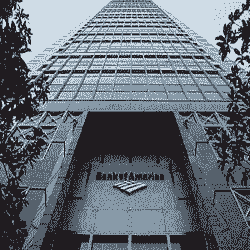The Future of Banking
Book by Quorum Books, 2003
Preface
This is the fifth in a series of books published by Quorum Books which began with one about bank failures (Bank Failures in the Major Trading Countries of the World, 1998) and continued with International Banking Crises (1999), The New Financial Architecture (2000), and Megamergers in a Global Economy (2002). The first book was a result of research done while I was at the Office of the Comptroller of the Currency in connection with the Gramm-Leach-Bliley Act. As that book was being written, a financial crisis began in Thailand, and then it spread around the world, providing interesting fodder for research. While working on books about failures and banking crises around the world, it became clear to me that bank regulation was not effective in preventing either failures or crises and that changes must be made in a new financial architecture. One of the more visible changes was increased consolidation and megamergers. The next topic dealt the outcomes of these and other events. Thus, this book is about the future of banking in the broad sense of that word.
It is obvious that banks are evolving in response to changes in competition, globalization, laws, technology, and other factors. Nevertheless, the long-run effect of these factors on banks and financial systems is not clear. Will banks and other financial service firms continue to consolidate on a global basis? Will electronic banking become the dominant form of retail banking? Will nonbank competitors replace banks? These are a few of the questions that are addressed here. This book consists of a collection of writings by academics, practitioners, and regulators from around the world who were asked to give their perspective of the future. The chapters cover such diverse topics as banking laws, electronic banking, microcredits in poor countries, relationship lending, stock exchanges in Europe, and more. Collectively, they provide unique insights into changes we can expect to see in the future. Earlier versions of some of these chapters were presented at the annual meeting of the Financial Management Association held in Toronto, Canada, in October 2001, and at other venues. Best American Banks Ratings Online Banking US Bank Reviews
CHANGES IN FINANCIAL SERVICES
Joseph A. Schumpeter, the Austrian-born economist who died in 1950, left us with two concepts that are alive and well today. He is best known for the concept of creative destruction, which refers to the process whereby new products and processes render the older ones obsolete in “wave-like” periods of innovation that contribute to booms and busts in the economy. 1 Schumpeter also recognized that technological change can revolutionize economic structures. 2 Today we are participating in the ongoing process of creative destruction and change that is being spurred by deregulation, globalization, and technological change. Although these changes are affecting all segments of the economy, our particular interest is in global financial services. In that regard, Robert C. Merton and Zvi Bodie (1995) observed that the basic functions of the financial system are stable across time and place, but the institutional ways in which they are performed are not constant. Those functions—payments, intermediation, managing risk, and price information—can be performed by banks as well as a wide variety of nonbank organizations such as Merrill Lynch, Fidelity Funds, and General Electric Credit. Simply stated, form follows function—and the forms of the financial service industry are changing.
As an illustration of the changes that took place in the financial system from the time of Adam Smith in the eighteenth century until the early twentieth century, we can point to the real bills or commercial loan theory which was the way banks operated in the past. That theory held that banks should make short-term self-liquidating loans to finance current production, transportation, or storage of physical goods (Meyer, 1986). Banks matched the maturities of their assets and liabilities. Banks no longer practice the real bills theory.
